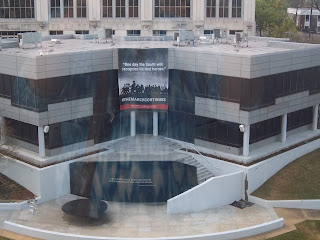We had never met anyone
in the United States from Panama and that piqued our interest to go there. We’d
be assured of hot weather when everyone in Chicago was suffering in the Polar
Vortex. We’d heard about Coronado Beach and besides, the Panama Canal is a
wonder of the world, an engineering feat fascinating to see.
We arrived in Panama on
February 4th in time to avoid a lot of horrendous Chicago weather
and to enjoy Panama’s dry season. Cruising the Canal is a must. Standing in the
middle of the Americas, the Canal has changed the history of our hemisphere
connecting us all in many ways. It’s advisable to book a boat cruise on the
Panama Canal on-line before you go there. You won’t want to miss it.
The histories of Panama
and the United States and the rest of the Americas are intertwined because of
the Canal. The day before going on the Panama Canal cruise, we visited the
Museum of the Panama Canal in Casco Viejo. This museum rolls out the history of
the Canal from the beginnings of its construction to the United States’ handing control of it to Panama. Captions are in both Spanish and English.
The Canal was built by
the United States and until 1999, was controlled by it. Because the area around
the Canal - the Canal Zone - was also controlled by the United States, our
influence is felt there even now in much larger proportion than in other parts
of Central America. For a long time, the Panamanians, viewing U.S. control of the Canal Zone as colonialism, had demanded that the
Canal and the Canal Zone be handed back to them. In 1977, President Jimmy
Carter and Omar Torrijos, then President of Panama, negotiated the return of
the Canal to Panama to be final in 1999.
Since the return of the Canal to Panama, Panama City has boomed, growing exponentially into one of over a million people with no apparent thought to urban planning. The income inequality is blatant. Yet,this city’s mushrooming in just over twenty years’ time is fascinating to see. The car traffic is impossible. Many high rises loom leaving little room for green space.
Many North Americans go there because it has modern conveniences and infrastructure. Their WIFI connections are great. You can drink the water. And violent crime is at a minimum. Their subway system is new and immaculate. I have to add that the people who ride it are extremely courteous offering both of us seats every time they saw us standing.
American chain stores and
megamalls that put the Mall of America in Minneapolis to shame abound there. At
the Albrook Mall, one can see every American chain store and fast food
restaurant imaginable. While it’s debatable whether or not this is the aspect
of our culture we want to export, it’s there for better or worse. Since it’s so
hot in Panama City – usually in the 90’s Fahrenheit with high humidity, we went
there a few times to be in air-conditioning, to walk, and to meet friends for
lunch or to get buses to other parts of Panama. While the influence of America
is there, you can still see many women dressed in traditional indigenous garb
going there to shop. I found these contradictions fascinating.
Try Panama. It stands at the center of the Americas and as such has always been a crossroads. It’s a great
place to start any exploration of the our hemisphere.









